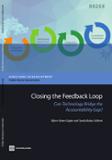Land the New Economic Bubble?
At the turn of the 21st century, farmland was still considered an investment backwater by most of the financial sector. Although some insurance companies have had farmland holdings for years, most financial investors found farmland, and agricultural investment in general, unappealing compared to the much higher returns to be made in financial markets.
Introduction: Farmland, A Safe Investment in Troubling Financial Times






